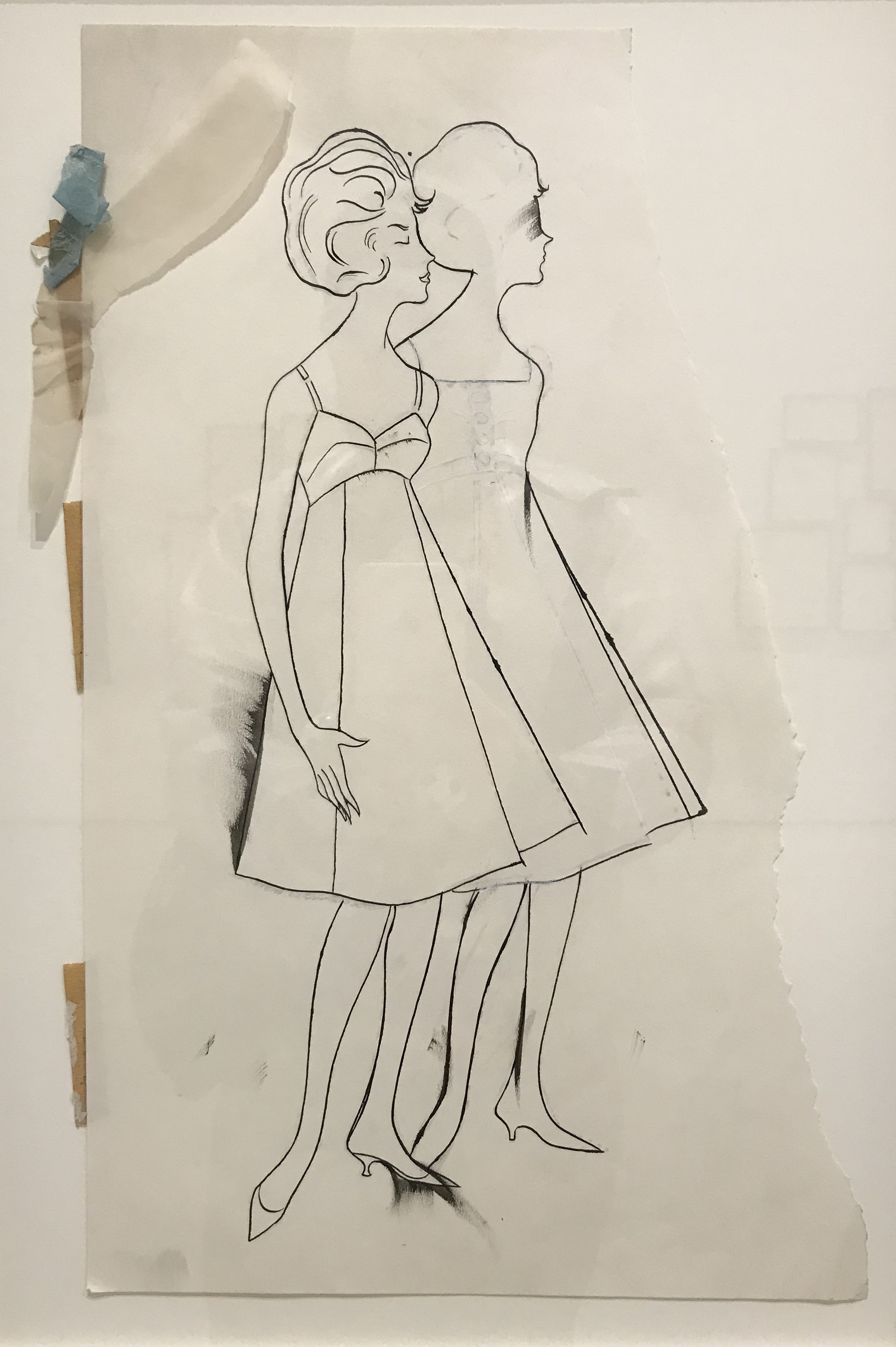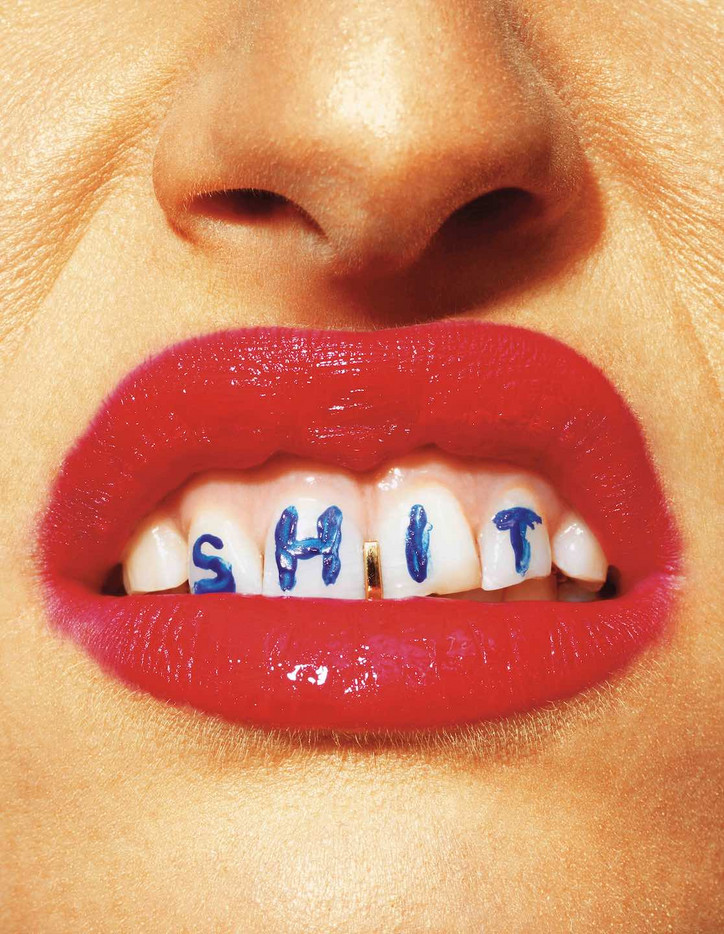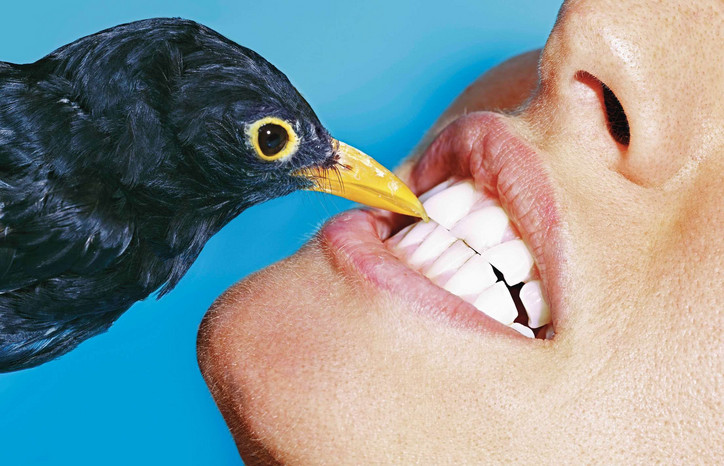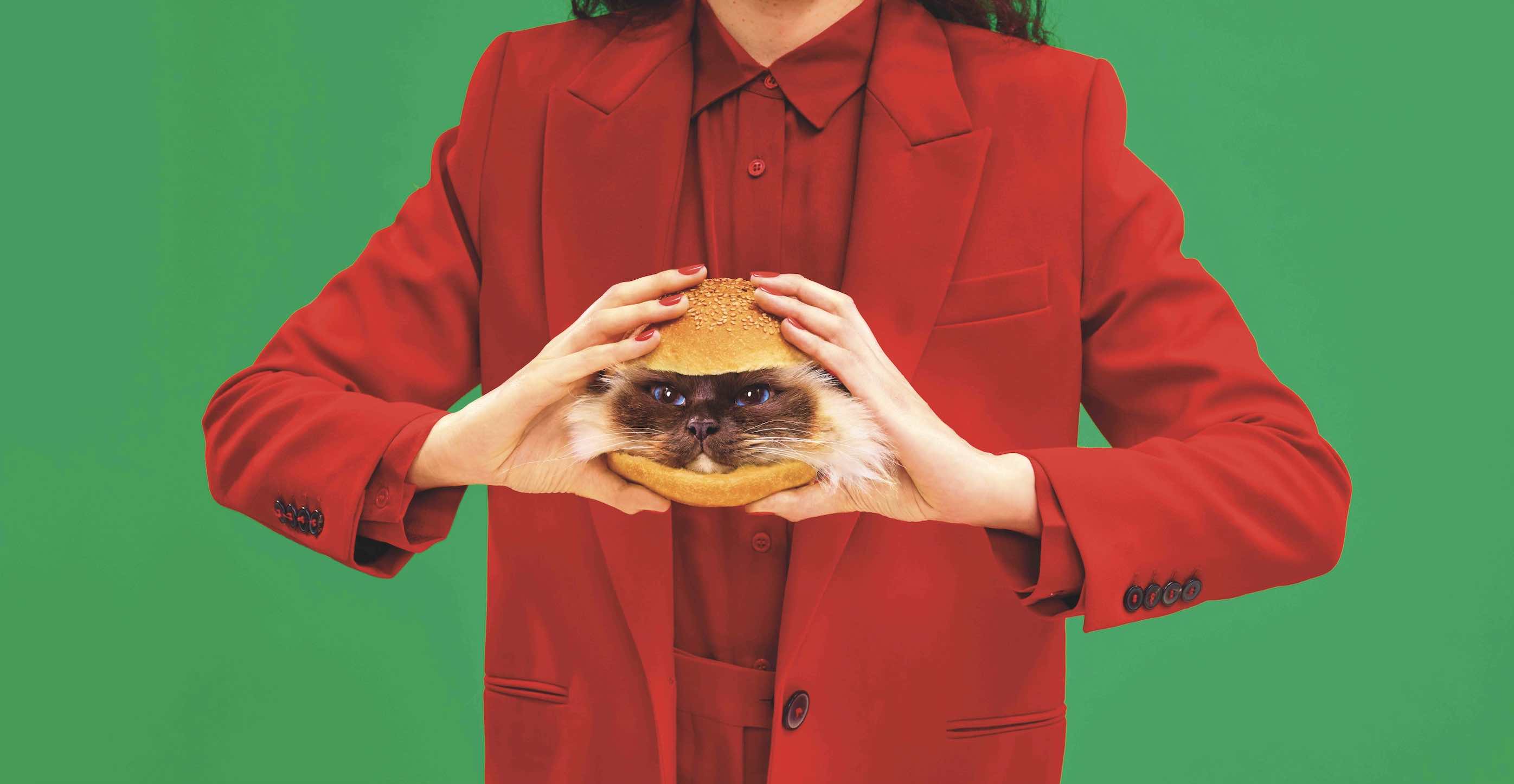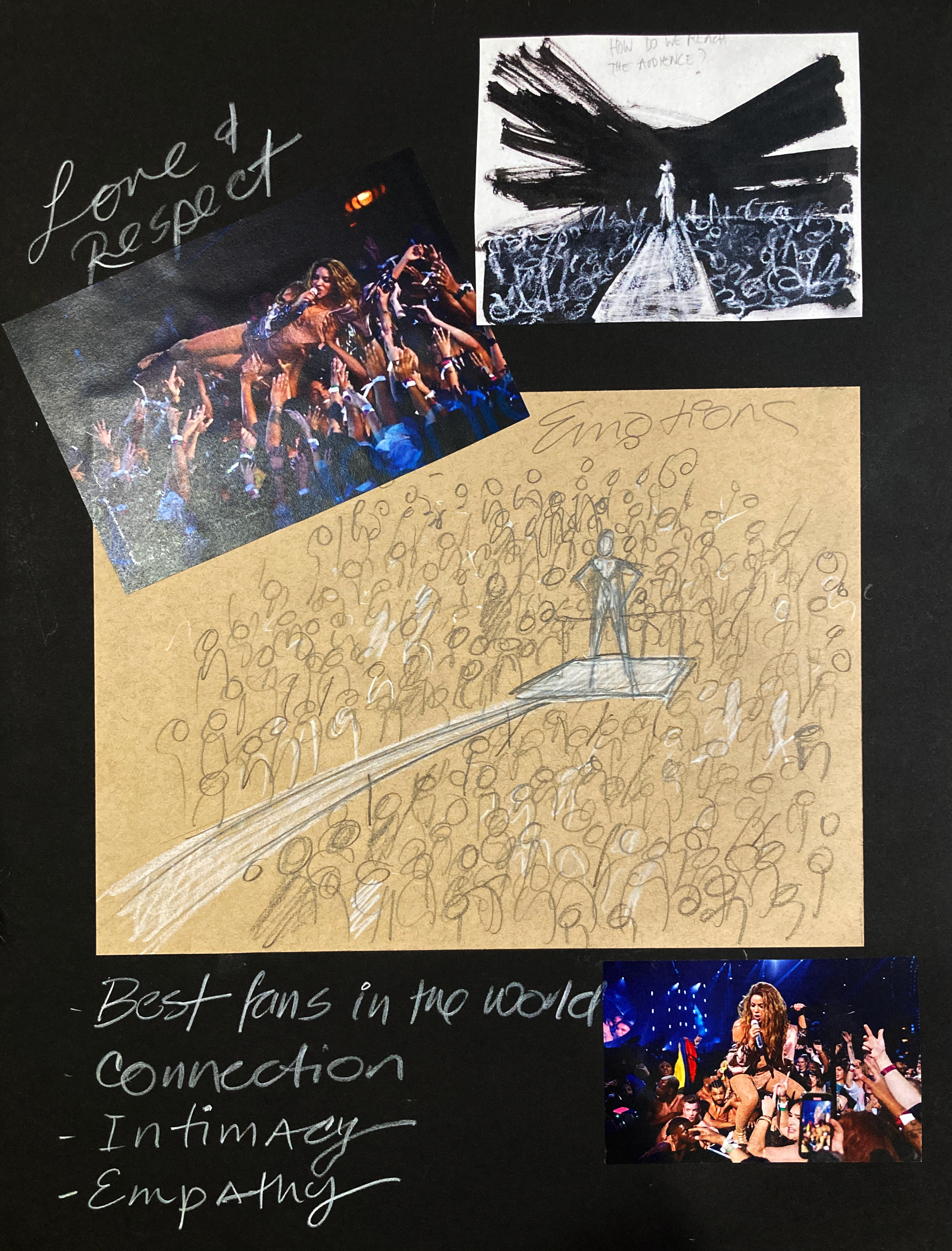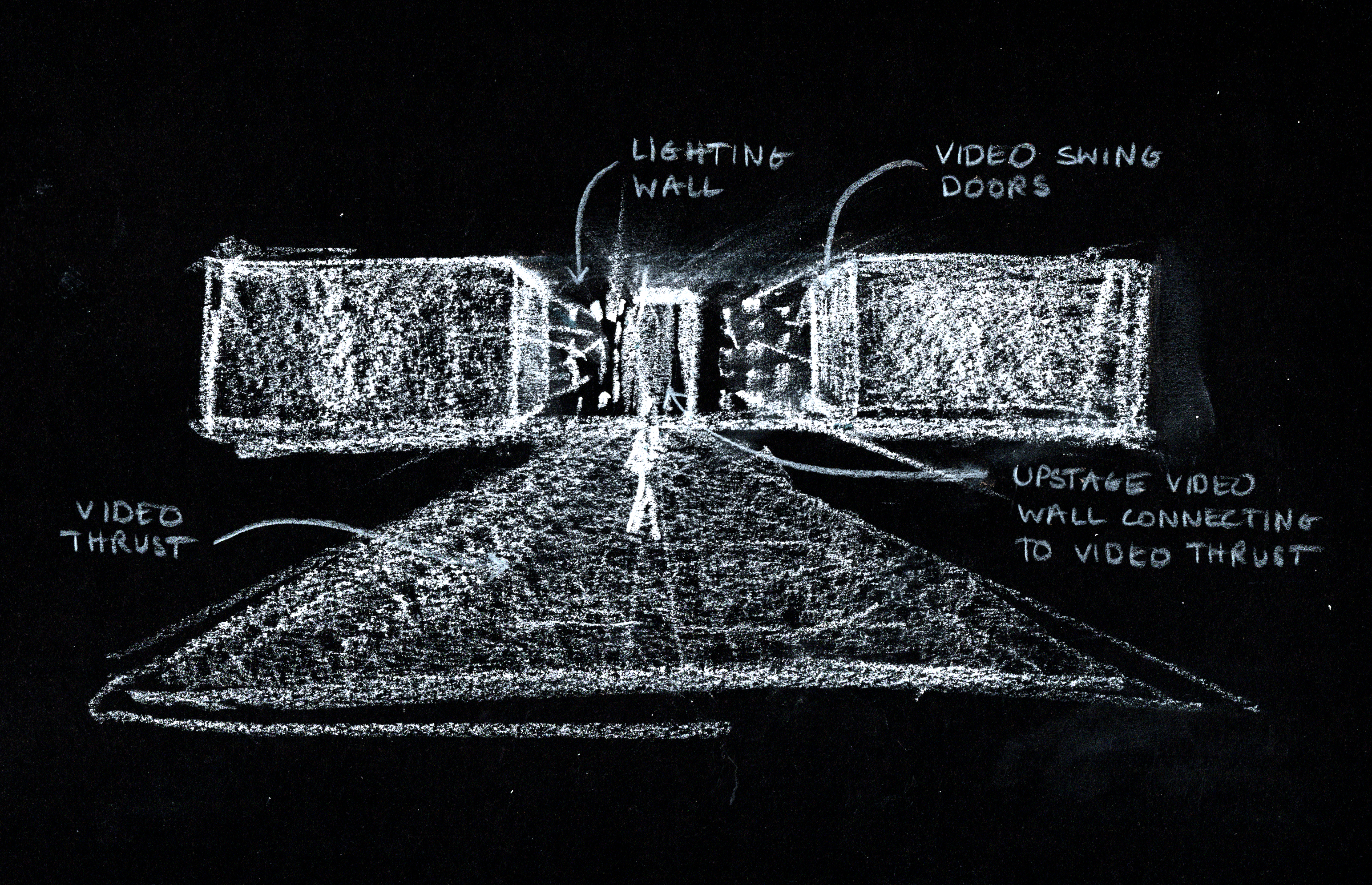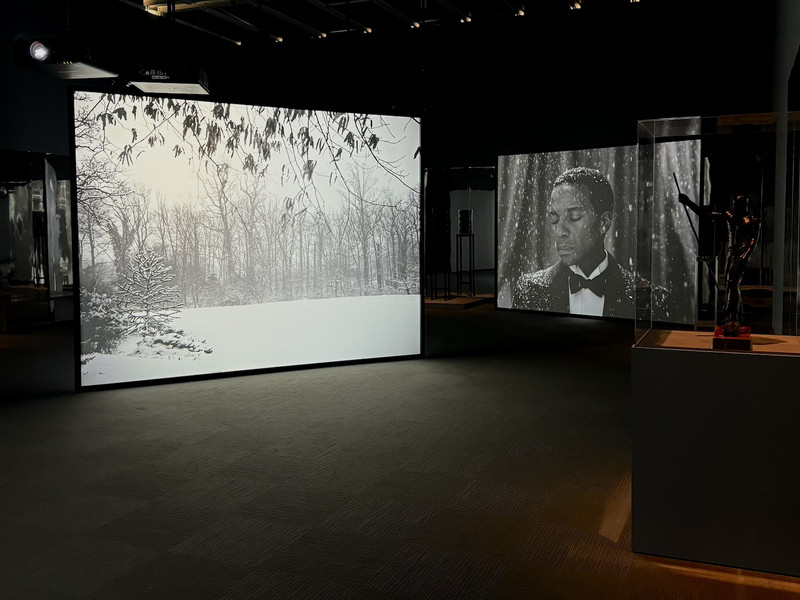We Need to Talk About Andy

The historical drawing exhibitions have attempted to accomplish what this small, sincere show does effortlessly: to reveal an unseen side of an already beloved artist. The Da Vinci and Michelangelo shows, along with the gaggle of other drawing exhibits across various museums, lacked the element of surprise: there is absolutely no doubt who made those pictures. Andy Warhol, however, managed to keep it a secret that he drew at all, and his elegant, goofy caricatures feel like something Holly Golightly might have commissioned from a New Yorker cartoonist on a whim in the park, so crisply do these dulcet scribbles capture the fraught energy of the 60s. They reveal a delicate sense of line, an intuitive curiosity, and, most importantly, an impish sense of humor.
office spoke with Vincent Fremont, Andy Warhol's right-hand man for many years, who helped curate the exhibit at Sperone Westwater, about Andy and his drawings.


Above: 'Head on Arm,' circa 1953, and 'Male Head,' circa 1953.
Do you want to just tell me about the show?
Well, what have you heard about the show?
I just have seen about three drawings and that’s it.
The reason why it's called 'Andy Warhol by Hand Part II' is because I co-curated an exhibition of Andy’s drawings with David Kratz, the president of the New York Academy of Art and they invited me to curate. It opened January 22nd of this year and closed March 10th. Angela then wanted to know if the show was going to go to some other venues and I said no, so she decided she would like to do another version at her gallery and it was a good thing to do because I don’t think people really know that much about Andy’s drawings, certainly not the early ones and his work process. The show at the New York Academy, 'Andy Warhol: By Hand,' the first one, you can see, let's say 1940, 1950 to 1986. The one opening next week, Part 2 is only 1950s and 1960s, but you will still see the blotted line with the templates, without the templates, ballpoint pen, pen and ink drawing. But there's not one piece at this show that was at the New York Academy. That was the one rule, I said you can't repeat any drawings. So it's another opportunity for people to take a look at Andy's work that he did by hand.
Right, because you don't really see Andy Warhol’s hand usually.
Well, the average person doesn’t. I certainly do because I worked with him for eighteen years. He also put out there in the world that he wanted to be a machine and he was pretending he was all hands-off. But I videotaped him in the seventies and you can tell by watching the way he paints; he fingerpainted a lot, but the whole idea of this exhibition was to stress the fact that Andy really loved drawing and that he drew his entire career and life, starting as a child. I guess people think he just did silk screens, but that was after. He was traditionally trained in art school in Pittsburgh at Carnegie Tech, and he helped start the New York Academy with others because he wanted to encourage those artists he was meeting in the early eighties to take drawing lessons or learn how to do life drawings. He took Kenny Scharf and Keith Haring, talked to John-Michel Basquiat about it. So Mr. Machine was actually, like I always knew, first and foremost an artist, and the practice of drawing was actually very important to him.
You answered all my questions. I was curious about whether you’d actually met Andy or not — you clearly worked with him. What was your role?
I met Andy in 1969, August to be exact, and then I freelanced for him and I had to leave to go back to the west coast, where I'm from, to LA, to deal with the draft in 69. Then I came back at the end of 70, and by January 71, that's when Andy asked me to come on and work every day with him. So I worked from the bottom up.
Very cool. Was that Factory era?
Well that was 33 Union Square West. It wasn’t the Silver Factory, that was over by 68. 33 Union Sq West is where I met him roughly a year after the assassination attempt by Valerie Solanas. How old are you may I ask?
How old am I? I’m thirty-one.
For heaven sakes! You’re young. I worked with Andy when I was young, I met him when I was eighteen, I became Vice President of Andy Warhol Enterprises in 1974, Executive Studio Manager — I produced all his television work.
So what was it like working with him, on a personal level?
Well, I look at it like this: I was very fortunate to work with one of the great artists of the 20th century. When people ask me about my education, I graduated from high school in San Diego and I basically went to the University of Andy Warhol. I met so many incredible people and worked with people and I still know people to this day that are still alive. It was a great opportunity. The more he trusted you, the more he empowered you to do things for him and you just had to understand how he thought. People like Bob Colacello and Pat Hackett, who was co-author of a number of books, they were all very good at interpreting Andy the way he wanted to be interpreted.


Above: 'Unidetified Male Portrait' 1952, and 'Female Head, Unicorn and Flowers,' circa 1957
And how would you describe his drawings? His drawing style?
When he graduated in 1949 he was very influenced by the German artist George Grosz, who was teaching actually in and around Pittsburgh at that point. Andy did a painting called 'The Broad Gave Me My Face, But I Can Pick My Own Nose,' and he put that into the local juried art fair and it was summarily tossed out and one of the judges on that art fair was George Grosz, who was a champion of him and defended it. And then around 1950 or 51, he was influenced by the American artist Ben Shahn who was certainly well known at that point, and when Andy started doing commercial work, starting very early in the 50s, you can start to see Ben Shahn-esque techniques as far as like the nose and things like that. He didn't maybe invent the blotted line technique, but he was a master of the blotted line, which is a form of prep-making where you trace over your line with ink and then you put it on a piece of paper when the ink's wet, you then press down on another piece of paper to make the image. He also was very good at the pen and ink drawing in ballpoint. He did a lot of male portraits in ballpoint pen. You could find similarities to Matisse, who he certainly was looking at. Paul Klee was an influence. He was very astute in art history. He knew it well.
What is your opinion of all of these shows happening at the same time about Andy Warhol?
Here's the thing. You have the Whitney, the beautiful show that Donna De Salvo did and that was the first retrospective in New York City since 1989 when the Museum of Modern Art did one curated by Kynaston McShine. So this whole generation, they didn't see a big body of work at one time. I curated a show in 2006 with Larry Gagosian at his gallery called 'Cast a Cold Eye,' which dealt with scale and paintings from 1972 to the end of his life in 87. So there have been shows, but I think it's kind of great. I did a show at the New York Academy to kind of echo and open a dialogue between the Whitney show and the drawing section. So people could go to the Whitney, see those drawings, and then if you want more depth, go to the New York Academy, we had another hundred and thirty drawings in that show. The one at the Sperone Westwater is like one hundred and twenty-four or five. So you get a good sense. There's a group in the Sperone Westwater, 'Andy Warhol By Hand: Part II' of Andy’s drawings that he did while in Asia in 1956. So those are directly from his sketchbooks, and you get a sense of how he drew from life.
Also, a lot of his drawings were based on Life magazine photographs that he would crop, flop, change. That's the beginning and almost precursor of Andy’s technique of using silk screen, which is photo-based. He was doing that in the 50s and he had Ed Wallowitch take photographs for him, like setups, even into the 60s, like for the Campbell's soup can paintings and stuff. Andy started his own photography, besides Polaroids. By 1975 he started taking his own black and white, point and shoot photographs. So photography was very important, it was an element, but it wasn't the only thing he did. He started incorporating line drawing into his paintings by making his line drawings into silk screens and that starts in the early 80s when he starts to use that technique and then using acrylic paint on paper to make images, and then those would turn into a silk screen. So it's a multilayered process that he developed.
How do you think Andy Warhol's work speaks to today’s audience?
I think young people, and you can correct me, but I think there's a fascination with Andy's world, especially in the 1960s. Now you have the Whitney show that closed but is opening in may in San Francisco, then you have two shows, the one I'm doing at Sperone Westwater, and then you have 'Warhol Women' at Levy Gorvy. So if you missed the retrospective you still have the opportunity to study Andy’s work with these two exhibitions.
I'm curious about what Andy Warhol would do these days. I feel like he foresaw so many things. What is your opinion on that? What do you think?
Well, Andy was a great editor and he wasn't predictable. People always tried to pigeonhole him and say he was going to do this and do that. I would never do that because you never know. You thought maybe you knew what he was going to do and he would do something the exact opposite or people say well why didn't you do so and so’s a portrait, there's a number of reasons, besides them not paying for it but he also did portraits of people he likes which weren't commissioned. I guess Instagram he would probably be fascinated with. He did work on a computer, he did Debbie Harry’s portrait in probably 85 or 86, I can't remember the year, for the Commodore Amiga launch back then at Lincoln Center. So he worked and practiced for like two weeks with the technicians, and in those days computers were not easy to get in and out of, and so he would've been fascinated with the advent of the iPhone and what he would've done is anybody's guess. People can have hypotheticals, but I'm sure he would've been involved because he liked polaroids and audiotapes and video because you could see the video right away. Polaroids developed themselves. Audiotapes you could playback immediately. So they were tools for him to document the time he lived in. So you could imagine with the internet he would have progressed at a faster rate. What imagery and whatever he would've picked is hard to say. But he was a visionary.
He liked immediacy.
And he was a very intuitive man, and as I said was a visionary. He did see things that were going to happen in the future with reality television and the paparazzi. His famous quote, “In the future everyone will be world famous for fifteen minutes,” and now it's rare to find someone who won't speak to a camera and talk about their lives, almost to the point you wanna pull your hair out. He liked interesting people and he liked people who could talk and who were creative. He was very democratic in the sense of equality for everyone. You know that famous quote, “Everyone drinks the same Coke, from the President of the United States to a movie star,” I'm doing bad paraphrasing but that's the kind of sensibility he had. The Coke still tastes like a Coke if you're a bum on Bowery or you're the President of the United States or Liz Taylor, it's going to be the same Coke. There's no differentiation between them.
He’s interested in people. Is that what he primarily drew? Portraits?
As a young child, encouraged by his mother, Julia, especially when he would go through bouts of illness and he was bedridden or in the house, he studied a lot of movie star magazines and he became enamored with Hollywood; but he would do portraits of his friends in the neighborhood so that kind of carried over. There's lots of links of Andy's drawing from a very early age until his unfortunate early death at the age of fifty-eight.


Above: 'Unidentified Reclining Female,' circa 1954, and 'Hermoine Gingold,' 1955
Why do you think he never went to Hollywood?
He did.
Did he?
There's one instance before I met him, he went out to Hollywood with film director Paul Morrissey (who had made 'Flesh, Trash, and Heat’)–Andy would just produce. Paul and Andy made unscripted movies, and Hollywood, you know, is about scripts, and Andy himself really didn't care about the beginning, middle and ending, he liked a good talker who could tell good stories and Paul was more traditional and did make films that had a beginning, middle and ending. And then the next time for Hollywood he was invited by Doug Cramer ,one of the producers of Love Boat, that was in 85, so he appeared as Andy Warhol. That's what you should look up, it's pretty humorous. I produced Andy's cable TV shows and then we finally got a series on MTV. We were probably the first long-format show with a half hour on MTV.
And what was the name of the show?
'Andy Warhol's Fifteen Minutes.' And it was a half hour long. Andy and I went up to see MTV executive Don Munroe and I cut a fifteen-minute reel and they said they couldn't sell ads because it was fifteen minutes, and I said make it a half hour and see if the kids know the difference. So it got a following and Andy got better and better on camera — he was very shy. And we did three 'Saturday Night Lives,' one or two minute little bits on NBC. He was interested in all of the media he could get his hands on, and that's why he was the publisher of a magazine, and we did the television work together.
Well it's telling that you're using the drawings because they seem like the most basic thing.
Well, I wanted to show a side of Andy that people kind of don’t really know about. There are some famous drawings. There are the drawings in the 60s of dollar bills and wrapped up rolls of money which were shown at the Whitney exhibition. You know you get to see those sometimes, but what people haven't seen a lot of is really the early 50s and the templates and the working process. He was a highly successful commercial illustrator and won many many awards with the Art Directors Club of New York, including the Highest Honor of Merit. I think it's something that people just don't think about, because they see paintings and they see Marylin Monroe and they see Elvis and those were great works of art, but I'm trying to stress that even when he was a commercial artist he was creating fine art. When you look at the portraits of mostly males you can see what I'm talking about. There's no hesitation in line, it's very direct, and again you can find influences, but he did change how people looked at art and how people looked at the world in general, because he had a very specific and unusual viewpoint. His interpretation of American culture was most fascinating, and that's why the German public were collectors, they were the ones who collected Pop Art in general, because post-World War II they were still struggling, most of the country, and you had an opportunity to have American consumerism on your walls which, in the 50s and the 60s, Europe was a lot different than it was today. It took a while to recover from the awful war.
I’m going to give you a little challenge. If you have to describe Andy Warhol in three words what would they be?
In three words? Master… of... life.
Master of life? That's a good one.
That's kind of off of the left field. Go see the show.
'Andy Warhol By Hand: Part II, Drawings 1950s-1960s' is on view at Sperone Westwater through June 29th, 2019.

